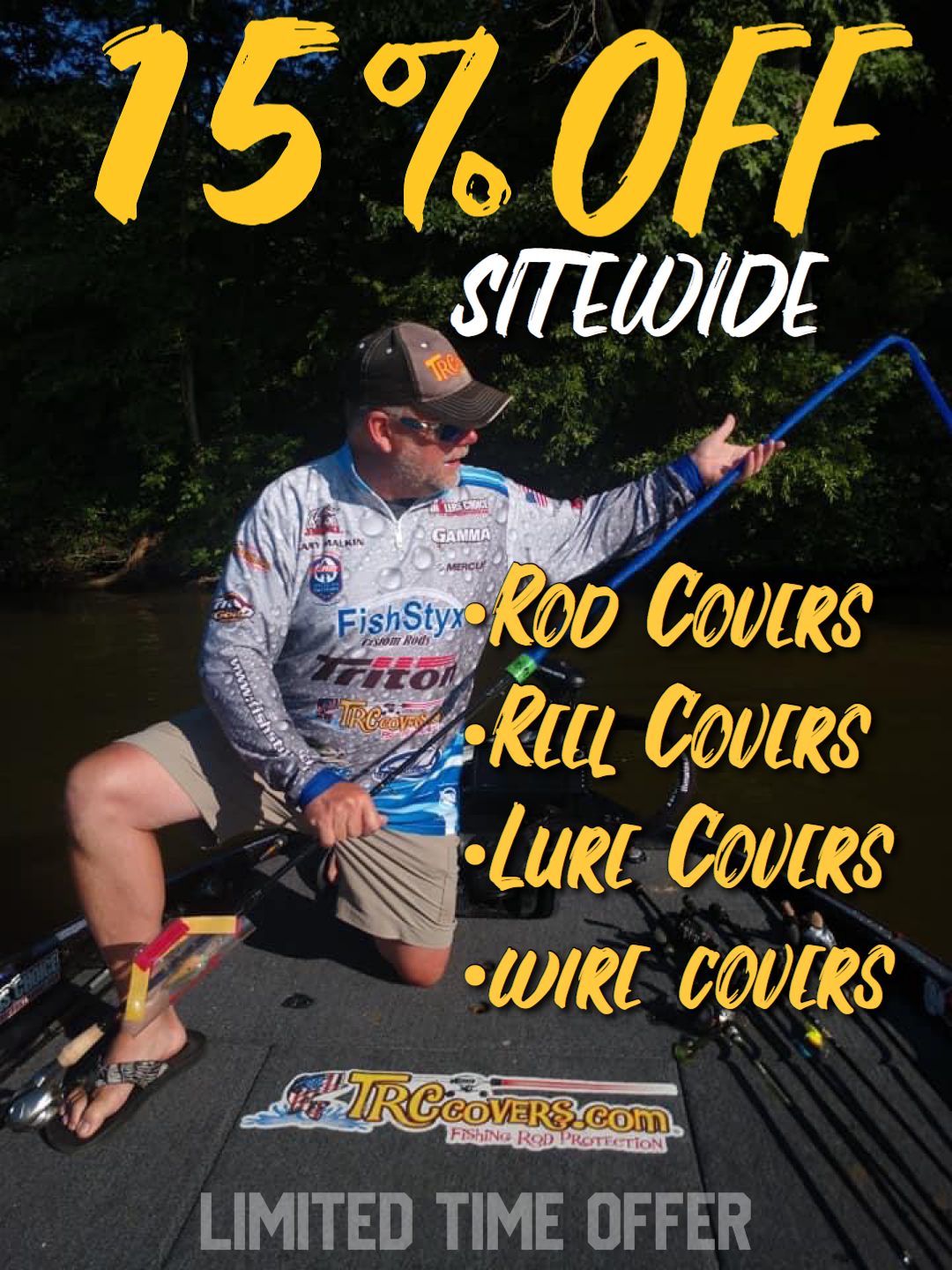
It’s that time of year when many anglers make the choice to fish at night, or just not fish at all. There could be multiple reasons for this, but the two most common are: 1. Too many pleasure boaters during the day, and 2. The bass do not bite well during the day in the heat and it is just too hot to fish anyway. Most of us who have been bass fishing for very long probably agree with number one. However, some have discovered there are ways to find a decent bite, even during the heat of the day during the “dog days of summer”.

Depending on the body of water, bass typically move out to deeper water during the summer months in search of cooler water. For many anglers, the thought of fishing offshore is a daunting one. I have spoken to anglers who cannot imagine fishing more than a cast away from the shoreline or some sort of structure to use as a target. I can even recall as a kid thinking, “Why is that guy fishing out in the middle of the lake?” I have known many weekend anglers who give up fishing in the summer because they are beating the banks in shallow water with no success, leading them to believe fishing in the summer is terrible. This is not actually true. While the bite can definitely be tougher in the summer, once you figure out the combination to your lake, the summer can produce some very good fish.

For the Tennessee River system lakes near my hometown, ledges and points are definitely the target structure this time of year. Typically during the hot summer months, fish on most of these lakes can be found in the 25 to 35 feet range, depending on the day and conditions.
The most common is approximately 30 feet. The best method I have found to target these fish begins of course, with your electronics. One must put in the time scanning to locate fish prior to ever making a cast. I personally use Lowrance Electronics. Lowrance has great images, fast processors, and dependable quality. However, this process can be made much easier and more efficient by starting your search before ever leaving home. Study your contour maps and satellite images of your destination lake. Look for points, drop-offs, and ledges in the desired depth range.
When studying these contours, also look for the small details that many may miss. A slight variation, or distortion in the contour lines (see image) can often be the key to finding that monster school.

Once you have located several of these types of areas to search, it is time to hit the water. Scan over the target area in a back and forth fashion, moving the boat to the left or right several feet each time. If your electronics have side-scan capabilities, you can usually make each pass farther apart and reduce your time. Be sure to mark any fish or structure with a waypoint. Even if there are no fish there at this time, if you find a ditch line, rock pile, or other structure bass may like, mark it to check later. After checking all your target areas, now it is finally time to go fishing.

We're looking for anglers who are passionate about promoting American made products & growing the sport of fishing. If you enjoy writing blogs, photography, videography and using social media to share your story with others, than your exactly who were looking for. click the button below to apply for our 2021 promotional team.
So, which baits to use is the obvious next question. My personal preference for those hot sunny days is to slowly drag baits on the bottom or toss a dropshot. For today, I will share my go-to bait. My go-to lure for this scenario is the Swinging Football Head from Tennessee Lunker Company (TLC Fishing). I like the 5/8- or 3/4-ounce size in a green pumpkin or matte green pumpkin color. The TLC Fishing Swinging Football Heads offer both options. TLC also offers a black and matte black option if your conditions call for it. These Swinging Football Heads have a nice sharp 5/0 hook that provides a great hookset and dependable penetration. My favorite soft plastic to use with this jig head is a larger 7 to 10-inch worm, in either a green pumpkin, red shad, or watermelon color. Sometimes I may add a little chartreuse dye if needed. Of course, color selection may vary slightly with conditions or the body of water, but these three colors will usually work just about anywhere.

Another option for these conditions is the old faithful Carolina Rig, which will be fished in much the same way. I use a strong 7’6” heavy rod with fluorocarbon line (I recommend at least a fluorocarbon leader if you are not a fan of using 100% fluorocarbon.). I personally use the Enigma Fishing Ippon Series rod for this. This provides the backbone and sensitivity I need for this setup. Plus, it has a lifetime warranty.
I like to make a nice long cast, then slowly drag the bait along the bottom. This bait allows you to really feel the bottom very well. I like to hold the rod parallel with the top of the water and pull the bait along the bottom with the rod going across my body. This allows me to detect bites easier and still get a good hookset. Obviously, you need to find the method that is most comfortable to you, but this has worked well for me. When I get to an area where I feel something on the bottom such as rock, pebbles, shell beds, etc… where I think fish may be holding… I pause, give the bait a shake or two, then pause again before returning to dragging.
TRC BUNDLE PACKS
BUNDLE & SAVE BIG
ANGLR BUNDLE PACK
This bundle includes a bullseye, cable cover to cover your wires, bait cast 7.0 and a spinning 7.0. Get yours now at the promotional price of $49.99.
PRO PACK
ProPack Includes: (2) Custom Baitcasting Rod Covers, (2) Spinning Rod Covers, (1) Cable Cover, (2) Lure Cover, (1) Hat, (1) Vinyl Sticker 3 1/2" x 12" * Sizes and colors may vary
The bite will often be very subtle. Since you can feel pretty much everything on the bottom, there will be those times when you mistake structure or debris for a bite. Just remember, as old saying goes, hooksets are free. Once you have done this for a while, you begin to better understand when it is a bite and when it is not. Sometimes, it will be a thump and there is no mistake that it is a bite. Once a bite is detected, you must give the fish time to take the whole bait and ensure it has the hook. My method for accomplishing this is to reel down, take a breath, then set the hook. This seems to work very well. If you jerk too soon, it is possible the fish could have only the tail of the bait and you will miss your opportunity to get a hook in. Obviously, many experienced anglers already know this method, or at least some variation of it. Hopefully, for those of you out there who have struggled with fishing the dog days of summer, this information will help get you headed in the right direction.
One more bit of advice I would like to share with you, is to be sure to protect those rods in your rod locker with a good high-quality rod sleeve. I personally prefer TRC Covers.
I always keep 30 rods in my rod locker. Without the protection of my TRC Covers, I would spend significant time untangling rods or replacing broken ones. My rods always have a TRC Cover and I have yet to have one damaged in the box.
Finally, remember when you are out on the water – Stay Alert, Stay Alive! Good luck! May your livewells be filled with lunkers!





